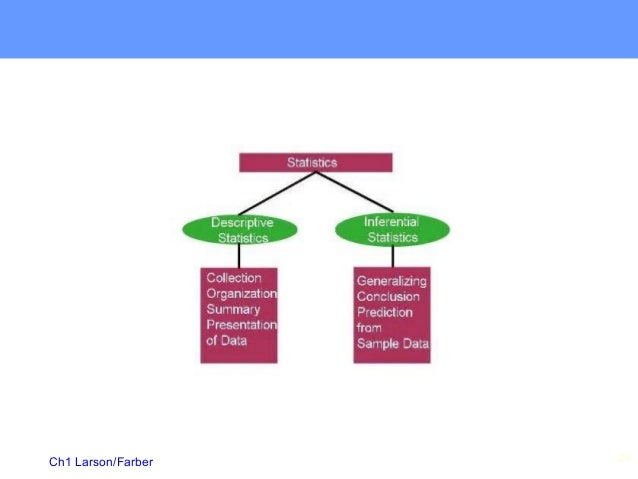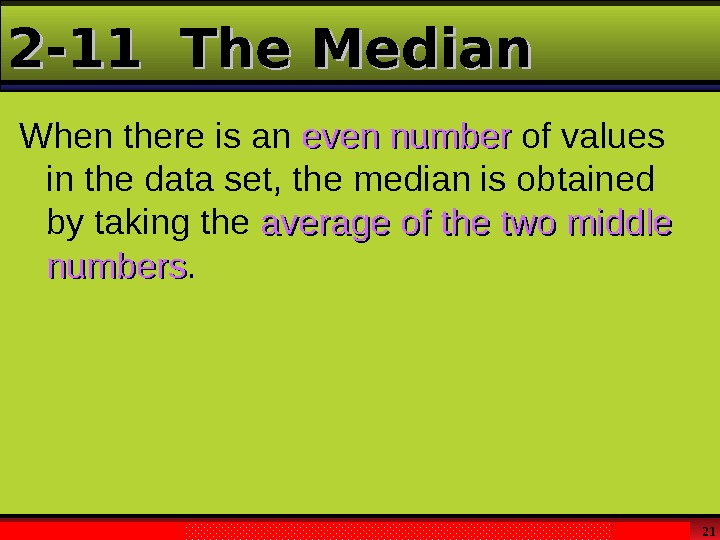- Elementary Statistics Picturing The World 7
- Elementary Statistics Picturing The World 7th Edition Answer Key
- Elementary Statistics Picturing The World 5e
- Elementary Statistics Picturing The World Answers
PART ONE. DESCRIPTIVE STATISTICS
Statistics opens a window to the modern world, and this market-leading text makes it easy to understand! Larson and Farber?s Elementary Statistics: Picturing the World, Sixth Edition, provides stepped out instruction, real-life examples and exercises, and the use of. Farber and Larson’s Elementary Statistics: Picturing the World 7th edition (PDF) makes stats extremely friendly with stepped-out guideline, excellent and comprehensive genuine-life examples and workouts, and a style that fits material for each and every page to make the product a lot more absorbable for trainees. Elementary Statistics: Picturing the World makes statistics approachable with stepped-out instruction, extensive real-life examples and exercises, and a design that fits content for each page to make the material more digestible. The text’s combination of theory, pedagogy, and design helps students understand concepts and use statistics to.
Picturing the World with Statistics. Statistics opens a window to the modern world, and this market-leading text makes it easy to understand! Larson and Farber’s Elementary Statistics: Picturing the World, 6/e, provides stepped-out instruction, real-life examples and exercises, and the use of technology to offer the most accessible approach.
Elementary Statistics Picturing The World 7
1. Introduction to Statistics
1.1. An Overview of Statistics
1.2. Data Classification
Case Study: Rating Television Shows in the
United States
1.3. Data Collection and Experimental Design
Activity: Random Numbers
Uses and Abuses
Chapter Summary
Review Exercises
Chapter Quiz
Chapter Test
Real Statistics-Real Decisions-Putting It All Together
History of Statistics-Timeline
Technology: Using Technology in Statistics
2. Descriptive Statistics
2.1. Frequency Distributions and Their Graphs
2.2. More Graphs and Displays
2.3. Measures of Central Tendency
Activity: Mean Versus Median
2.4. Measures of Variation
Activity: Standard Deviation
Case Study: Business Size
2.5. Measures of Position
Uses and Abuses
Chapter Summary
Review Exercises
Chapter Quiz
Chapter Test
Real Statistics-Real Decisions-Putting It All Together
Technology: Parking Tickets
Using Technology to Determine Descriptive
Statistics
Cumulative Review: Chapters 1 and 2
PART TWO. PROBABILITY & PROBABILITY DISTRIBUTIONS
3. Probability
3.1. Basic Concepts of Probability and Counting
Activity: Simulating the Stock Market
3.2. Conditional Probability and the Multiplication Rule
3.3. The Addition Rule
Activity: Simulating the Probability of Rolling a 3 or 4
Case Study: United States Congress
3.4. Additional Topics in Probability and Counting
Uses and Abuses
Chapter Summary
Review Exercises
Chapter Quiz
Chapter Test
Real Statistics-Real Decisions-Putting It All Together

Technology: Simulation: Composing Mozart
Variations with Dice

4. Discrete Probability Distributions
4.1. Probability Distributions
4.2. Binomial Distributions
Activity: Binomial Distribution

Case Study: Distribution of Number of Hits in
Baseball Games
4.3. More Discrete Probability Distributions
Uses and Abuses
Chapter Summary
Review Exercises
Chapter Quiz
Chapter Test
Real Statistics-Real Decisions-Putting It All Together
Technology: Simulation: Using Poisson
Distributions as Queuing Models
5. Normal Probability Distributions
5.1. Introduction to Normal Distributions and the Standard Normal Distribution
5.2. Normal Distributions: Finding Probabilities
5.3. Normal Distributions: Finding Values
Case Study: Birth Rates in America
5.4. Sampling Distributions and the Central Limit Theorem
Activity: Sampling Distributions
5.5. Normal Approximations to Binomial Distributions
Uses and Abuses
Chapter Summary
Review Exercises
Chapter Quiz
Chapter Test
Real Statistics-Real Decisions-Putting It All Together
Technology: Simulation: Age Distribution in the
United States
Cumulative Review: Chapters 3 to 5
PART THREE. STATISTICAL INFERENCE
6. Confidence Intervals
6.1. Confidence Intervals for the Mean (¡ Known)
6.2. Confidence Intervals for the Mean (¡ Unknown)
Activity: Confidence Intervals for a Mean
Case Study: Marathon Training
6.3. Confidence Intervals for Population Proportions
Activity: Confidence Intervals for a Proportion
Elementary Statistics Picturing The World 7th Edition Answer Key
6.4. Confidence Intervals for Variance and Standard Deviation
Uses and Abuses
Chapter Summary
Review Exercises

Chapter Quiz
Chapter Test
Real Statistics-Real Decisions-Putting It All Together
Technology: Simulation: Most Admired Polls
Using Technology to Construct Confidence
Intervals
7. Hypothesis Testing with One Sample
7.1. Introduction to Hypothesis Testing
Elementary Statistics Picturing The World 5e
7.2. Hypothesis Testing for the Mean (¡ Known)
7.3. Hypothesis Testing for the Mean (¡ Unknown)
Activity: Hypothesis Test for a Mean
Case Study: Human Body Temperature: What's
Elementary Statistics Picturing The World Answers
Normal?
7.4. Hypothesis Testing for Proportions
Activity: Hypothesis Test for a Proportion
7.5. Hypothesis Testing for Variance and Standard Deviation
A Summary of Hypothesis Testing
Uses and Abuses
Chapter Summary
Review Exercises
Chapter Quiz
Chapter Test
Real Statistics-Real Decisions-Putting It All Together
Technology: The Case of the Vanishing Women
Using Technology to Perform Hypothesis Tests
8. Hypothesis Testing with Two Samples
8.1. Testing the Difference Between Means (Independent Samples, ¡1 and ¡2 Known)
8.2. Testing the Difference Between Means (Independent Samples, ¡1 and ¡2 Unknown)
8.3. Testing the Difference Between Means (Dependent Samples)
8.4. Testing the Difference Between Proportions
A Summary of Hypothesis Testing
Uses and Abuses
Chapter Summary
Review Exercises
Chapter Quiz
Chapter Test
Real Statistics-Real Decisions-Putting It All Together
Technology: Tails over Heads
Using Technology to Perform Two-Sample
Hypothesis Tests
Cumulative Review: Chapters 6 to 8
PART FOUR. MORE STATISTICAL INFERENCE
9. Correlation and Regression
9.1 Correlation
Activity: Correlation by Eye
9.2. Linear Regression
Activity: Regression by Eye
Case Study: Correlation by Body Measurements
9.3. Measures of Regression and Prediction Intervals
9.4. Multiple Regression
A Summary of Hypothesis Testing
Uses and Abuses
Chapter Summary
Review Exercises
Chapter Quiz
Chapter Test
Real Statistics-Real Decisions-Putting It All Together
Technology: Nutrients in Breakfast Cereals
10. Chi-Square Tests and the F-Distribution
10.1. Goodness-of-Fit Test
10.2. Independence
Case Study: Food Safety Survey
10.3. Comparing Two Variances
10.4. Analysis of Variance
Uses and Abuses
Chapter Summary
Review Exercises
Chapter Quiz
Chapter Test
Real Statistics-Real Decisions-Putting It All Together
Technology: Teacher Salaries
Cumulative Review: Chapters 9 and 10
11. Nonparametric Tests
(Online Only: Download from MyStatLab or www.pearsonhighered.com/mathstatsresources)
11.1. The Sign Test
11.2. The Wilcoxon Tests
Case Study: College Ranks
11.3. The Kruskal-Wallis Test
11.4. Rank Correlation
11.5. The Runs Test
Uses and Abuses
Chapter Summary
Review Exercises
Chapter Quiz
Chapter Test
Real Statistics-Real Decisions-Putting It All Together
Technology: U.S. Income and Economic
Research- Slides: 12
Elementary Statistics: Picturing The World Sixth Edition Chapter 7 Hypothesis Testing with One Sample Copyright © 2015, 2012, 2009 Pearson Education, Inc. All Rights Reserved
Chapter Outline 7. 1 Introduction to Hypothesis Testing 7. 2 Hypothesis Testing for the Mean (σ Known) 7. 3 Hypothesis Testing for the Mean (σ Unknown) 7. 4 Hypothesis Testing for Proportions 7. 5 Hypothesis Testing for Variance and Standard Deviation Copyright © 2015, 2012, 2009 Pearson Education, Inc. All Rights Reserved
Section 7. 4 Hypothesis Testing for Proportions Copyright © 2015, 2012, 2009 Pearson Education, Inc. All Rights Reserved
Section 7. 4 Objectives • How to use the z-test to test a population proportion p Copyright © 2015, 2012, 2009 Pearson Education, Inc. All Rights Reserved
z-Test for a Population Proportion • A statistical test for a population proportion. • Can be used when a binomial distribution is given such that np 5 and nq 5. Copyright © 2015, 2012, 2009 Pearson Education, Inc. All Rights Reserved
Using a z-Test for a Proportion p (1 of 2) In Words In Symbols 1. Verify that the sampling distribution np ≥ 5 and nq ≥ 5 of p hat can be approximated by the normal distribution. 2. State the claim mathematically and State H 0 and Ha. verbally. Identify the null and alternative hypotheses. 3. Specify the level of significance. Identify α. 4. Determine the critical value(s). Use Table 5 in Appendix B. Copyright © 2015, 2012, 2009 Pearson Education, Inc. All Rights Reserved
Using a z-Test for a Proportion p (2 of 2) Copyright © 2015, 2012, 2009 Pearson Education, Inc. All Rights Reserved
Example 1: Hypothesis Test for a Proportion (1 of 2) A research center claims that less than 50% of U. S. adults have accessed the Internet over a wireless network with a laptop computer. In a random sample of 100 adults, 39% say they have accessed the Internet over a wireless network with a laptop computer. At α = 0. 01, is there enough evidence to support the researcher’s claim? (Adopted from Pew Research Center) Solution • Verify that np ≥ 5 and nq ≥ 5. np = 100(0. 50) = 50 and nq = 100(0. 50) = 50 Copyright © 2015, 2012, 2009 Pearson Education, Inc. All Rights Reserved
Example 1: Hypothesis Test for a Proportion (2 of 2) • Decision: Fail to reject H 0 At the 1% level of significance, there is not enough evidence to support the claim that less than 50% of U. S. adults have accessed the Internet over a wireless network with a laptop computer. Copyright © 2015, 2012, 2009 Pearson Education, Inc. All Rights Reserved
Example 2: Hypothesis Test for a Proportion (1 of 2) • The Research Center claims that 25% of college graduates think a college degree is not worth the cost. You decide to test this claim and ask a random sample of 200 college graduates whether they think a college is not worth the cost. Of those surveyed, 21% reply yes. At α = 0. 10 is there enough evidence to reject the claim? Copyright © 2015, 2012, 2009 Pearson Education, Inc. All Rights Reserved
Example 2: Hypothesis Test for a Proportion (2 of 2) • Decision: Fail to reject H 0 At the 10% level of significance, there is not enough evidence to reject the claim that 25% of college graduates think a college degree is not worth the cost. Copyright © 2015, 2012, 2009 Pearson Education, Inc. All Rights Reserved
Section 7. 4 Summary • Used the z-test to test a population proportion p Copyright © 2015, 2012, 2009 Pearson Education, Inc. All Rights Reserved